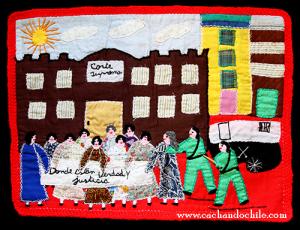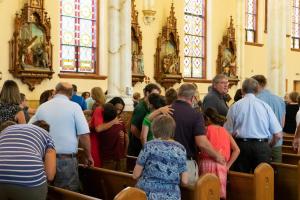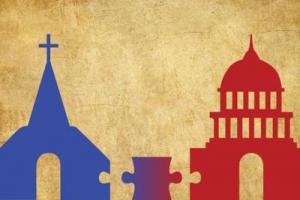
William T. Cavanaugh writes about the brutal regime under Pinochet in Chile. He documents its effects on individuals and the even more ominous consequences for civil society. The aim and result of Pinochet’s repression was the fragmentation of social bodies. The regime tried to eliminate any intermediary between the individual and the power of the state. Toward this end the state used torture and the neo-liberalism Chilean economists learned at the University of Chicago.
On Chapter One, Sections Two and three of Torture and Eucharist: Theology, Politics, and the Body of Christ, fourth in the series on William T. Cavanaugh, a Catholic theologian who writes about the Church and its role in culture, politics, and economics. Introduction to Cavanaugh and links to blogs in the series as they appear are here.
The regime of torture goes beyond dehumanizing the individual victim. It fragments society. Torture was not only pain but also indefinite confinement, disorientation, and sexual debasement. It reduces the person to the confines of his or her body. The person becomes nothing more than an individual, destroyed as a political actor. Past attachments and future hopes become unreal.
Constant diatribes against “extremism” in the state-controlled media discourage association with a released torture victim. One might come under suspicion oneself. Torture “disciplines” society “into isolated monads easily made to serve the regime’s purposes.” (45)
Torture, though brutal and seemingly a remnant of an uncivilized era, actually follows advanced scientific techniques. Part of the science of torture is knowing how not to kill the victim. The regime needs the tortured person as a tool in the society it is creating, a society of individuals who know no dependence other than on the state. Fear and suspicion are further items in the regime’s toolbox.
Neo-liberalism, the economic theory imposed by ‘Los Chicago Boys’
A person didn’t need to have engaged in any illegal activity to face arrest and torture. It could be perfectly random. The regime could even admit later that “mistakes were made” and only increase the general insecurity thereby. Deliberately vague rules, for example, on the limits to group activities made caution paramount. The net effect of this strategy was the disappearance of social bodies that would rival the state.
It’s significant that the Pinochet coup was against the socialist government, democratically elected, of Salvador Allende. Neo-liberalism was the economic theory the Pinochet regime imposed. Chilean economists, whom the people called “los Chicago Boys,” learned that theory at the University of Chicago (p. 39). Milton Friedman was that school’s economic guru. In his sight,
There are no values, no “social” responsibilities in any sense other than the shared values and responsibilities of individuals. Society is a collection of individuals and of the various groups they voluntarily form. (“The Social Responsibility of Business is to Increase its Profits” Milton Friedman, The New York Times Magazine, September 13, 1970)
Guided by that vision, Pinochet’s neo-liberal economists
privatized state-run enterprises, slashed public employment, reversed land reform, cancelled wage increases, deregulated banking, and dismantled labor unions. (p. 39)
Even without torture neo-liberalism, which passes for conservatism in the United States, tends to weaken the intermediary institutions necessary for a vibrant civil society.
The Church’s loss of the soul
“The Striptease of Power” is Cavanaugh’s title for the next section of Chapter One. It’s eerily appropriate. Striptease reveals, but not all. That is the tease part.
Like striptease, torture in the Pinochet regime is not the straightforward thing it was, say, in the Middle Ages. Then you took your beating in public view. Everyone knew what the story was and where you stood in that story. The Pinochet regime took care to hide torture. The power of the state was felt but not seen. Torture done very scientifically left no marks on the body. Or a “cosmetic” phase, actually part of the torture, gave the body time to heal before the victim walked free.
You could only imagine what was going on; you couldn’t see it. And that imagination was not just an image of the state’s power working somewhere else. It was the state’s power inside you. The state accomplished its control over bodies by invading the inmost regions of the person, the soul. (p. 57)
The Church imagined that it would maintain its authority over souls as it ceded authority over bodies to the state. But the state, grown all-powerful with its torture and neo-liberal economics, wasn’t going to settle for two separate authorities with any kind of power. Cavanaugh says the Church needed to reassert itself in the sphere of bodies or it would lose the soul.
Martyrdom as a discipline the Church needs and the state cannot abide
Cavanaugh says the Chilean Church ceded the territory of the body to the state in exchange for license to operate in the arena of the soul. But bodies and souls don’t separate that easily or without damage. The soul disappears into a private realm, and the body follows. The state remains as the only public entity, the only entity with any public influence.
The Church needs public bodies besides the body of the state. The Church in Chile needed the public witness of martyred bodies to recover its status as a body, a social body to challenge the state. The state imagines it has all power. The imagination of the martyr is that Christ has conquered death, the greatest of the state’s powers. Martyrdom doesn’t consign hope to a distant heaven. In fact, it beats the state at its own game. The state must deny martyrdom to the church. It does so by keeping all traces of torture hidden and “disappearing” the bodies that it murders.
In Chapter Two Cavanaugh will explain how the Church got locked for a time into a private and ineffectual arena. Further chapters will see the Church breaking free of self-imposed restrictions and challenging the Pinochet regime.
Image credit: Coordinadora Estudiantil Badajoz via Google Images












